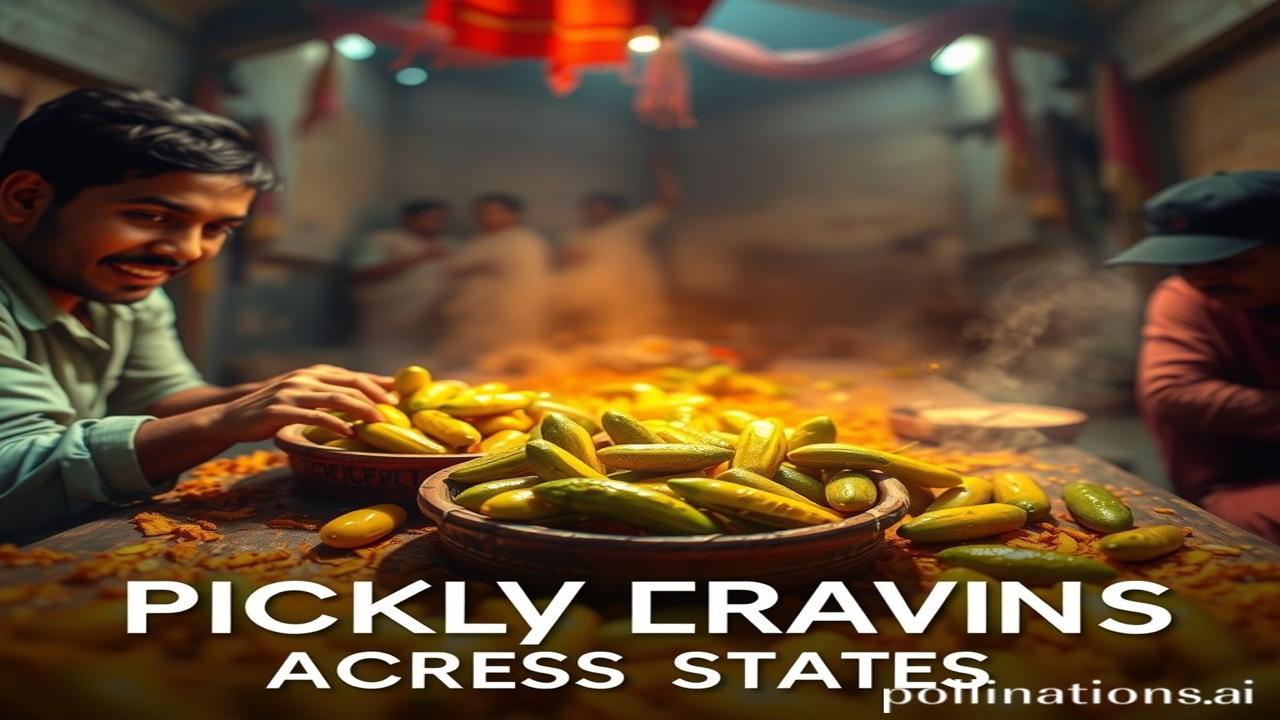Achaar Ki Kahani: India Ke Har Kone Se, Dharti Maa Ka Swad
Kabhi socha hai, ek chhoti si bottle mein band, tel aur masalon mein dooba hua aam ya nimbu ka tukda, kitni yaadon ko samete hota hai? Jaise kisi daadi maa ki haath ki likhi recipe, ya kisi gaon ki mitti ki mahak, achaar sirf ek side dish nahi, yeh toh India ki culture ka ek hissa hai!
Achaar: A History Masale Aur Pyar Se Bhari
Achaar banane ki tradition India mein centuries se chali aa rahi hai. We’re talking ancient times! Some historians believe that the practice of pickling originated in Mesopotamia around 2400 BC, but the way India has embraced and perfected it is something else entirely. Achaar sirf food preservation ka tareeka nahi tha, yeh toh monsoon ke dino mein, ya fir lambi yatraon mein swad aur nutrition ko saath le jane ka zariya tha. Socho, Raja Maharaja bhi apne safar mein achaar le jaate the!
Maa Ka Pyaar Aur Achaar: Ek Rishta Anmol
Imagine a scene in a typical Indian household: Grandma sitting in the verandah, sunshine warming her face, carefully selecting the ripest mangoes. The whole family gathers around, helping her with the process. It’s not just about making achaar; it’s about bonding, sharing stories, and passing down family traditions.
“Beta, yeh masala zara dhyan se daalna. Yeh toh humari dadi ne banaya tha,” Maa kehti hai, uski aankhon mein pyar aur respect saaf dikhta hai.
From the ancient Ayurvedic texts to the modern kitchens, achaar has always held a special place. Different states have their own unique recipes and methods. For example:
- Punjab: Famous for its spicy mango and mixed vegetable achaar.
- Gujarat: Sweet and tangy chundo (grated mango pickle).
- South India: Lemon, mango, and gongura (a type of leafy vegetable) achaars, often using sesame oil.
- West Bengal: Sweet and spicy mango and tamarind achaars.
Each region brings its own twist, using local ingredients and traditional methods. It’s a testament to India’s incredible biodiversity and culinary heritage.
Achaar: Bharatiyata Ka Swad Aaj Bhi
Aaj bhi, achaar India ki har family mein kisi na kisi form mein zaroor milta hai. Whether it’s a homemade batch passed down through generations or a store-bought bottle, achaar is a reminder of home, of tradition, and of the flavors that define us. It’s a connection to our roots, a taste of “Bharatiyata” in every bite. Festivals ho ya shaadi, achaar toh har table ki shaan hai!
Fun Fact: Achaar Aur Astrology Ka Connection?!
Log samajhte hain ki achaar sirf ek food item hai, lekin asli sach yeh hai ki some people believe different types of achaar are associated with different astrological signs. Apparently, eating certain achaars can bring good luck according to your zodiac! Kaisa laga yeh sunke?
The Scent of Nostalgia: A Visual Delight
Imagine the aroma of mustard oil, asafoetida (hing), and spices wafting through the air as achaar is being made. Picture the vibrant colors of the mangoes, lemons, and chilies, each adding its own unique flavour to the mix. Feel the warmth of the sun on your skin as you help stir the ingredients in a large clay pot. The sound of laughter and chatter fills the air as the family works together. It’s a sensory experience that evokes feelings of nostalgia, warmth, and comfort.
Achaar: Ek Dhrohar
Achaar is more than just food; it’s a cultural treasure, a “dhrohar” that connects us to our past and celebrates the rich diversity of India. It’s a story told through flavors, a legacy passed down through generations.
“Rasna hi toh jeevan hai, swad hi toh sanskriti.” (Taste is life, flavour is culture.)
So, the next time you savor a spoonful of achaar, take a moment to appreciate the history, the culture, and the love that went into making it. It’s a taste of India, a taste of home, a taste of tradition.
